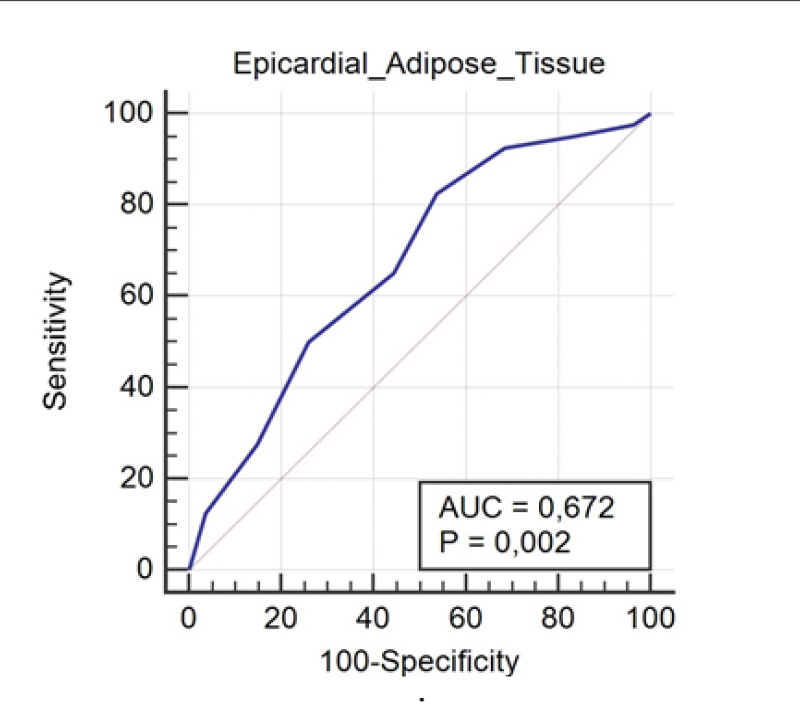Volume 114, Nº 4, April 2020
DOI: https://doi.org/10.36660/abc.20190197
ORIGINAL ARTICLE
The Relationship Between Epicardial Adipose Tissue and Insulin Resistance in Obese Children
Hatice Güneş
Hakan Güneş
Fatih Temiz

Figure 1 – Receiver operator characteristic (ROC) curve of EAT to predict insulin resistance.
Abstract
Background: Insulin resistance (IR) is an important disorder in obese children because it is closely related to cardiovascular diseases. Epicardial adipose tissue (EAT) plays a role in the development of IR due to secreted bioactive molecules, and the inflammatory process of these molecules may cause atrial electromechanical delay (EMD).
Objective: The objective of our study was to determine the relationship between EAT and EMD with IR in obese children.
Methods: Ninety-four obese patients were included in the study. IR was calculated using the Homeostatic Model Assessment for Insulin Resistance (HOMA-IR) and defined as HOMA-IR greater than the 90th percentile in an ageand sex-specific percentile curve. Patients were divided into two groups according to their IR. All patients underwent echocardiographic examinations. Statistical significance was set to a two‑sided p-value < 0.05.
Results: EAT was significantly higher in the IR group (p < 0.001). The optimal cut-off value for EAT to predict IR was found to be > 3.85 mm, with 92.5% specificity and 68.5% sensitivity (p = 0.002). In the multivariate logistic regression model, EAT (OR = 1.256, 95% CI: 1.016–1.53, p = 0.035) was also associated with IR after adjustment for variables found to be statistically significant in univariate analysis. Inter- and intra‑atrial EMD was significantly prolonged in the IR group compared to the group without IR (p < 0.010; p = 0.032 respectively).
Conclusion: In our study, we revealed that EAT was positively correlated with IR and was an independent predictor of IR. (Arq Bras Cardiol. 2020; 114(4):675-682)
Keywords: Pericardium; Adipose Tissue; Obesity; Child; Insulin Resistance; Echocardiography/methods.















